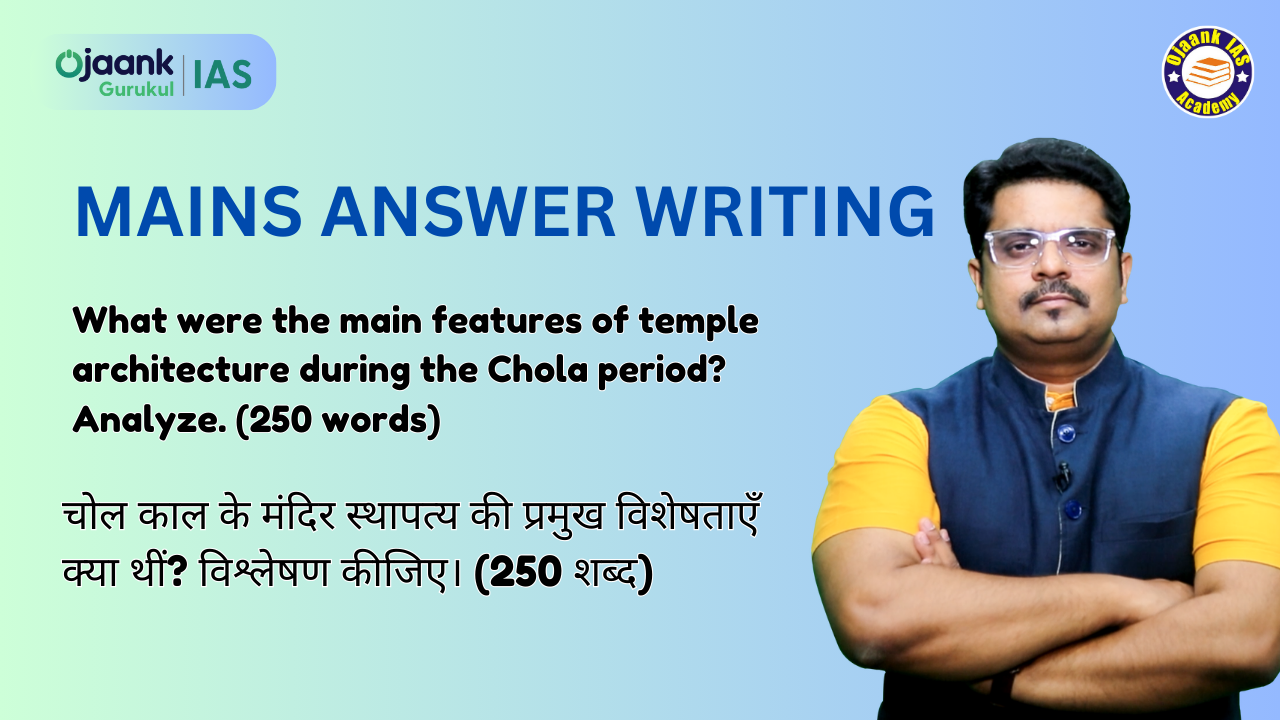What were the main features of temple architecture during the Chola period? Analyze. (250 words)

I. Key Features:
Peak of Dravidian Style:
-
Presence of tall Vimanas (temple towers).
-
Main components of temples included the Garbhagriha (sanctum), Antarala (vestibule), Mandapa (hall), and Gopuram (gateway tower).
Expression of Royal Power:
-
Temples were not merely religious centers but also functioned as administrative and cultural hubs.
-
Construction of temples by kings was a display of Rajadharma (royal duty) and imperial grandeur.
Massive Stone Sculptures:
-
Bronze sculptures of Nataraja (form of Shiva) highlight the Cholas’ excellence in sculptural art.
II. Major Examples:
Brihadeshwara Temple, Thanjavur:
-
Built by Raja Raja Chola in the 11th century.
-
Vimana stands 216 feet tall.
-
Contains a massive Shiva Lingam and Nandi sculpture made of granite.
Gangaikondacholapuram Temple:
-
Constructed by Rajendra Chola I.
-
Reflects architectural maturity and depth.
Airavatesvara Temple, Darasuram:
-
A UNESCO World Heritage Site.
-
Features intricate and exquisite carvings.
III. Sculpture and Painting:
-
Bronze Sculptures: The "Tribhanga posture" represents a blend of beauty and devotion.
-
Frescoes: Wall paintings depicted religious epics and narratives.
IV. Conclusion:
Chola architecture became the cultural backbone of South India and influenced temple architecture for centuries to come.
-1745063980123.jpeg)